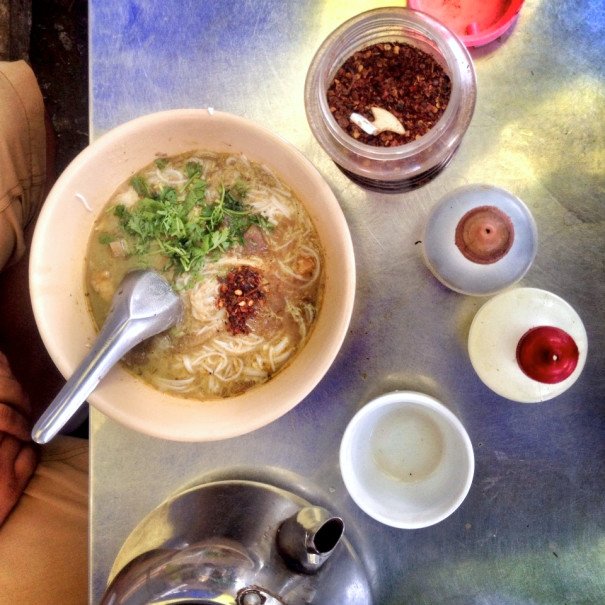
The Glorious Number One Dish of Burma

The Glorious Number One Dish of Burma
Mohinga in Yangon
A trip to Burma can be as expensive or as cheap as you want. To get around the city you could pay a few dollars for a taxi, or just walk, if you don’t mind the crushing humidity.
If you’re traveling further afield, you may want to look at flights, around $100 one way, or perhaps just take a bus for $15. Don’t take any long train rides if you value your sanity/ribs/a linear progression of time. And finally at night, when you’re looking for somewhere to rest your head, you could always stay at the Sule Shangri La for just $355 a night. Alternatively, you could spend $4 a night and sleep in the infamous “Hobbit Cave” of Mahabandoola Guest House.
Choices are a-plenty, and the same divergence applies to food. Yet whereas the others tend to follow some correlation between cost and quality, the same cannot be said for culinary matters.
In my last trip to Yangon, budgetary constraints, which is also just what I call my bank account now, imposed a certain curtailment of my options. I had to eat for cheap. Thankfully, this meant that I was able to enjoy the rather wonderful breakfast option of mohinga.
Wondering around the streets of downtown Yangon in the early morning, it’s hard to miss the mohinga sellers. Almost every corner has a little food stall, and almost any stall with a large metal pot will have it. This is probably because mohinga is cherished as Burma’s national dish, and demand in the morning is high.
“It is number one of course…” This was how one young man sternly responded to my question of where it ranks in Burmese dishes. He seemed genuinely shocked that I had even asked, and I was half expecting him to add “…you idiot.”
A smooth, comforting noodle soup, mohinga is, I recognize, not for everyone. The base, the most important aspect of the dish, is a fish stock that may be too pungent for some. However, the stock varies from stall to stall as each person adds or omits that little something that makes every new plate of the stuff prompt just a flicker of anticipation for the nuanced differences.
At its most basic, mohinga is served with some thin rice noodles, casually grabbed from a large tangle next to the pot of soup, and plopped into the bottom of a small bowl. Next is the soup itself, a mixture of the fish broth, rice powder, onion, and chopped banana stems, which surprisingly retains a touch of its fruitiness. Together, the flavors are delicate and light, perfect for breakfast and thoroughly fulfilling. Oh, and I should add it costs 30 cents a bowl.
So while I may have resorted to Mohinga out of fiscal prudence at the start, that’s not the reason I continued to eat it every morning for a week. The stuff is glorious.